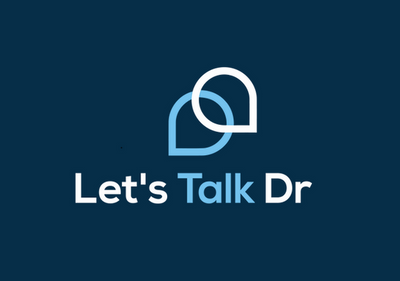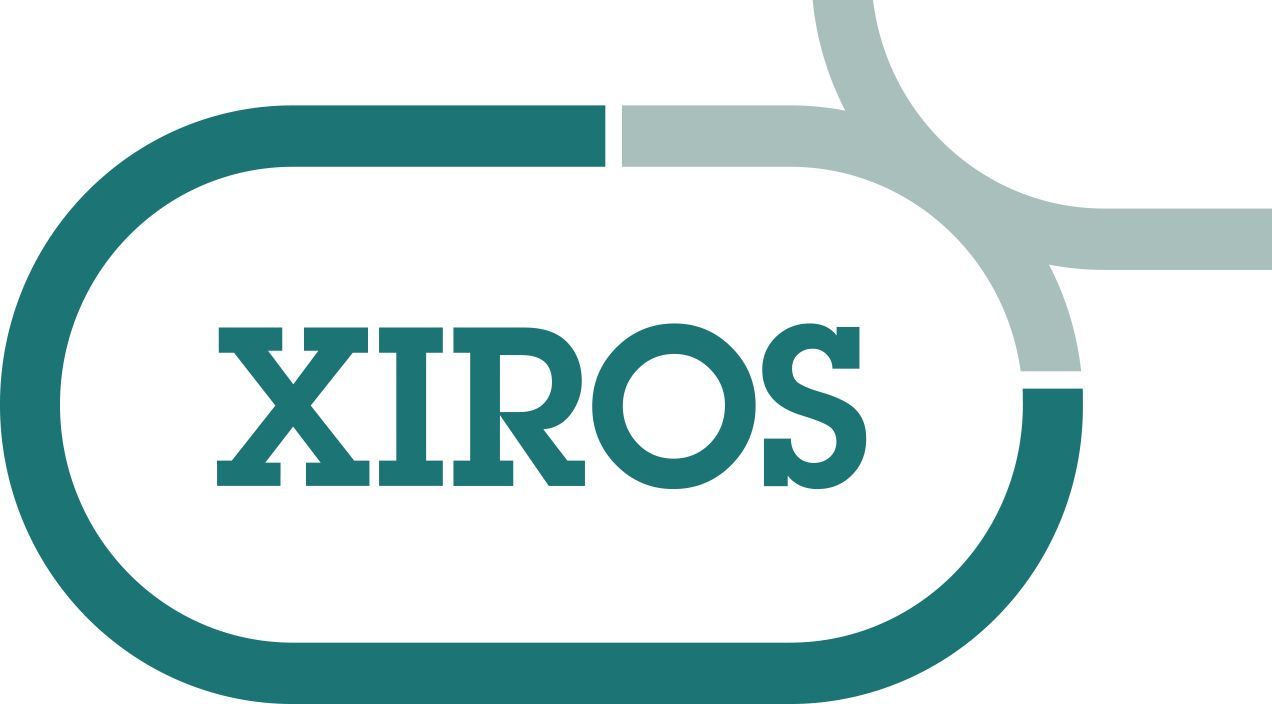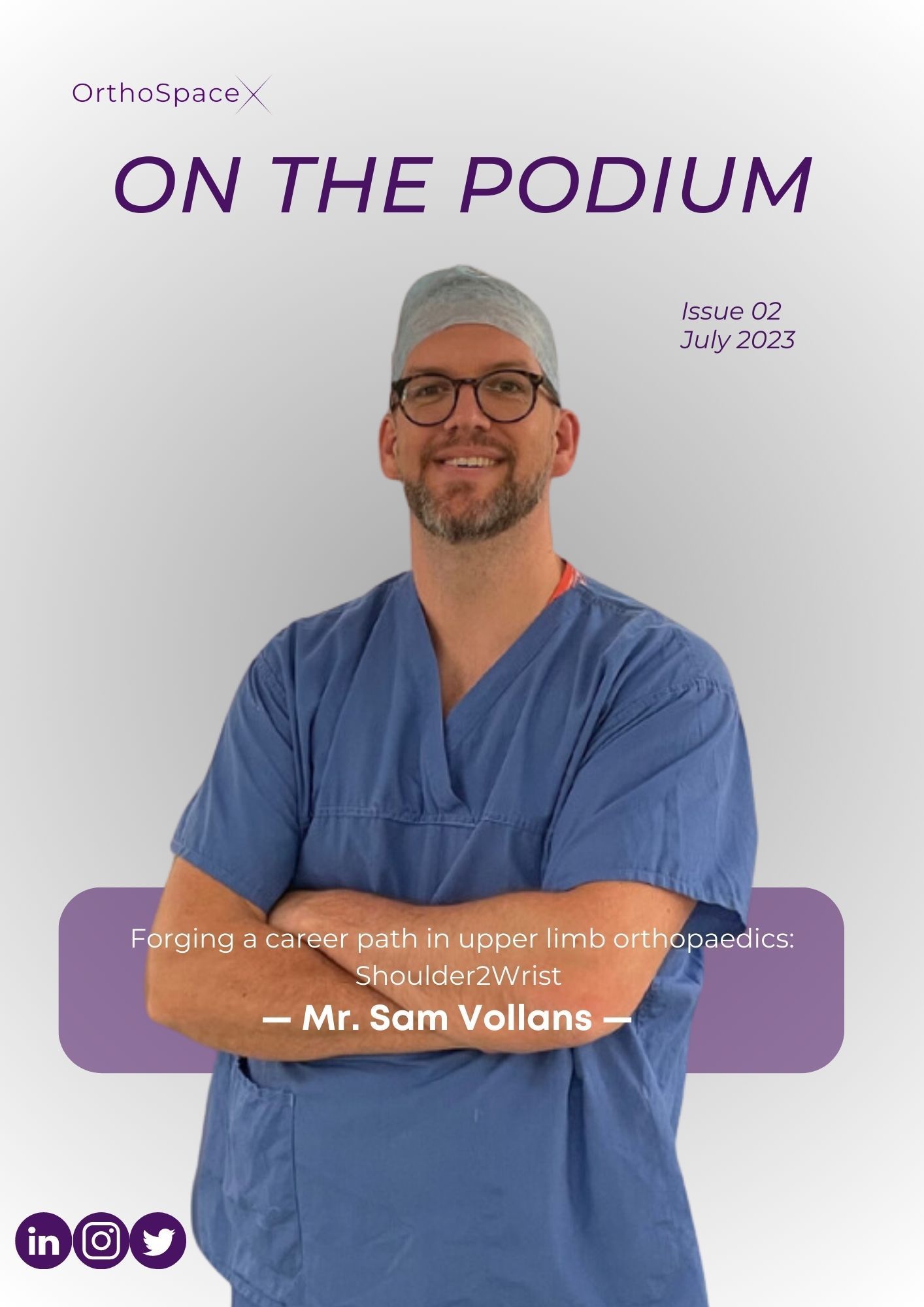When Bone Meets Byte:
Exploring AI’s Role in Modern Orthopaedics
An Interview with:
Professor Mohamed Imam
Issue 19, Noveber 2025
What first drew you to explore digital health and artificial intelligence within orthopaedics?
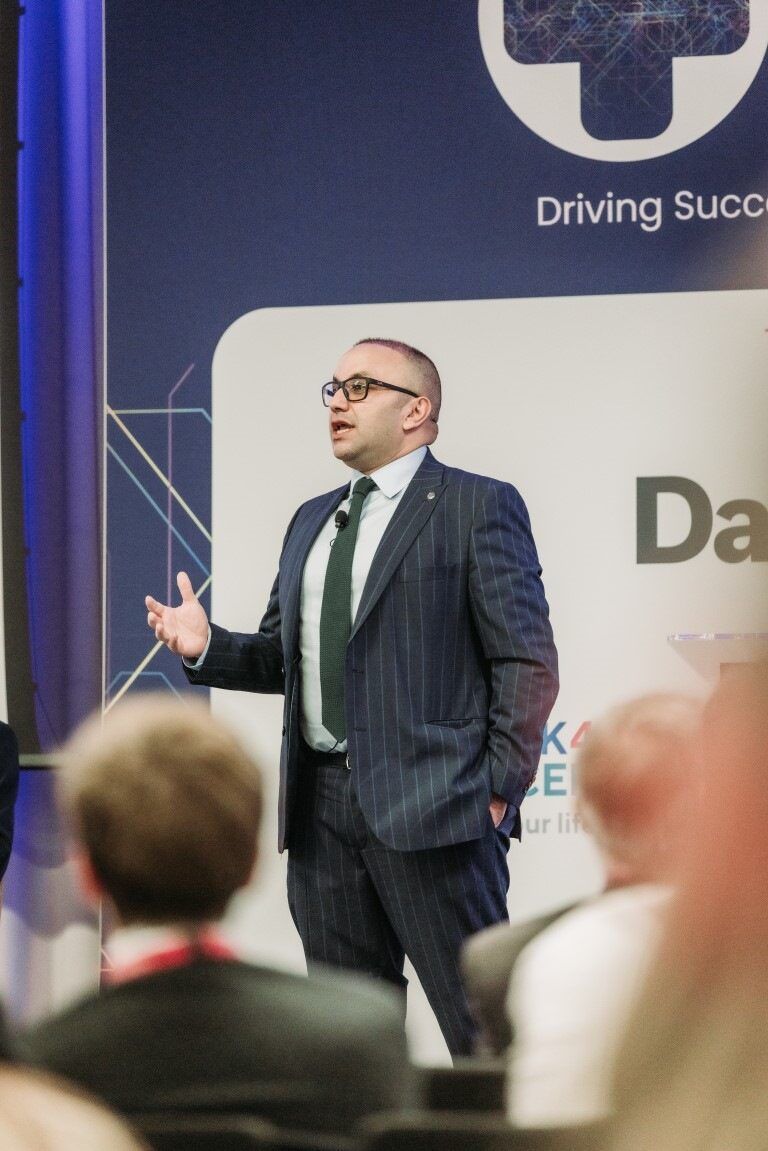
I was always interested in numbers and algorithms. Over a decade ago, I learnt to code, not to build machines that replace surgeons but to extend our judgment. I think of this as a cognitive exoskeleton: software that surfaces the correct data and the proper evidence at the right moment, reduces omissions and bias, and makes complex decisions transparent. In short, it standardises what should be standard and personalises what must be personal. ChatGPT made AI mainstream, but AI is more complicated than large language models. In medicine, two forces drove me there: variation and speed. Variation, because patients with the same condition received different care, as data remained isolated and workflows were overwhelmed. Speed, because evidence now advances faster than any clinician without assistance can follow. As a trauma and upper-limb surgeon, and later in decision science leadership, those gaps between what we know and what we do became impossible to ignore. The next breakthrough in orthopaedics won't come from a sharper scalpel but from better decisions, such as indications, risk assessment, implant selection, knowing when not to operate, and rehabilitation, that are made consistently and fairly. Digital health and AI are tools that enable high-quality care to be consistent, traceable, and scalable, ensuring every patient benefits from our shared knowledge. That belief is what attracted me, and it continues to motivate my work.
How will AI shape the diagnosis and management of orthopaedic conditions in the near future?
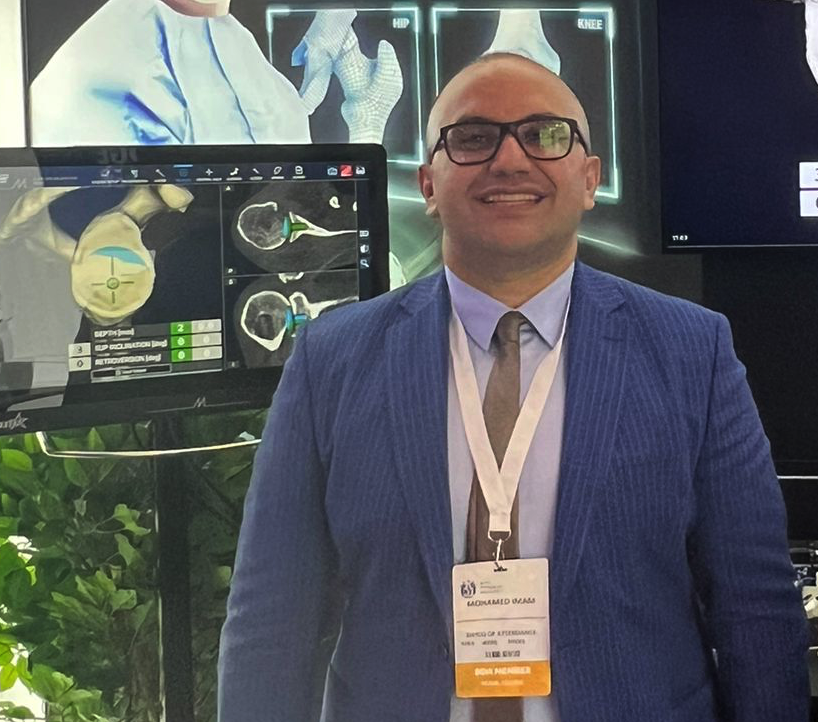
I always apply the “family and friends test” in my practice. My late mother’s journey with terminal cancer placed me on the other side of the consultation table. That experience shaped my conviction that clinical governance means delivering the very best care possible to the patient sitting in front of me. Gandhi famously said, “Be the change that you wish to see in the world.” Since establishing my own practice, I have recognised the improvements made in the system, but also the persistent need for progress, particularly in fostering a blame-free culture where learning, rather than fear, drives safer outcomes. Looking ahead, I see AI as the quiet operating system of the orthopaedic pathway, a tool that will augment, not replace, clinical judgment. Its role can be understood across four domains:
· Diagnosis: Supporting clinicians as a second reader, reducing missed injuries, and contextualising data.
· Management: Creating personalised, evidence-based pathways that improve outcomes.
· Safety: Embedding guardrails, explainability, and bias checks to enhance trust.
· Workflow: Streamlining documentation, coding, and scheduling to return time to patient care.
· Administrative Work and Automation
Diagnosis
· Context-aware “second reader”. AI will triage scans, highlight likely misses, and automate key measurements (angles, lengths, templating markers), reducing false negatives and time to report.
· Structured, explainable outputs. Overlays, quantified uncertainty, and standardised terminology will make reports more reproducible and auditable.
Management
Personalised pathways. By linking imaging, operative data, and PROMs (patient-reported outcome measures), models will predict complication risk (e.g., stiffness, re-operation) and recommend the tempo and intensity of rehabilitation for each patient.
· Pre-operative decision support. Indication thresholds, implant templating, and risk–benefit visualisations will help align choices with patient goals and comorbidity profiles.
· Post-operative surveillance. Wearables and smart devices will detect deviation from expected recovery curves, prompting early intervention rather than late escalation.
Workflow
· Frictionless documentation. Operative notes, clinical letters, and discharge summaries will be drafted from structured intra-operative and EHR data, with clinicians editing rather than dictating—freeing time for patient care. This will save a considerable amount of time for residents, and when multiplied by trusts, will result in a significant reduction in administrative time for the NHS.
· Operational intelligence. Theatre list optimisation, inventory forecasting, and follow-up scheduling will be informed by live capacity and risk signals.
Safety & governance (guardrails by design)
· Regulatory alignment. Adoption will follow the NICE Evidence Standards Framework and the MHRA SaMD/AIaMD Change Programme, with UKCA marking where required.
· Clinical safety standards. Deployment under NHS DCB0129/DCB0160 (clinical risk management), with prospective “silent mode” testing, bias audits (age, sex, ethnicity, deprivation), and performance-drift monitoring.
· Accountability. Human-in-the-loop decisions, clear audit trails, and post-market surveillance embedded in routine practice.
Administrative Work and Automation Routine:
Administrative tasks consume a disproportionate share of clinicians’ time. Emerging digital tools now offer meaningful relief through:
· Ambient voice recognition: Real-time transcription of consultations, capturing the clinical narrative seamlessly in the background and reducing the need for manual notetaking.
· AI-assisted dictation: Automated generation of structured operative notes, discharge summaries, and clinic letters from spoken input, with built-in templates and coding support.
· Process automation: Intelligent workflows that extract data once (e.g., demographics, comorbidities, operative details) and repopulate it across letters, billing, registries, and theatre logs, eliminating repetitive entry.
· Task orchestration: Automated reminders and scheduling prompts (e.g., follow-up appointments, imaging requests, rehabilitation milestones) generated from clinical records, reducing errors and administrative delays.
· Integrated validation: Natural-language processing tools that not only draft documents but also flag missing fields, inconsistent data, or potential safety issues before sign-off. Imagine a world where every child has access to the same medical service and possibly access to a world expert in their problem. Today, we’re taking a step to make that world a reality. Fewer misses, faster diagnoses, reduced unwarranted variation, shorter recovery times, improved PROMs, and better patient experience, delivered consistently and equitably.
Which AI platforms are you using for research, and how are they helping trainees and clinicians?
I always ask myself one question which is...why is it that, despite having world-class hospitals, so many patients with preventable injuries and conditions still fail to receive timely and effective care?
Eighty years ago, a computer made its first calculation. Today, machines perform quintillions of calculations per second, and AI influences most of the research we publish. The challenge isn’t technology, it’s making evidence-based medicine comprehensive, current, and usable at the bedside. That’s why our approach is privacy-first, pragmatic, and problem-led. A brilliant academic doctor, Atef Hassan, and I built platforms like CiteSort.ai, which maps entire fields of evidence; on-premises LLMs, which draft securely inside Trust walls; and interpretable ML, which delivers risk models patients and clinicians can understand together. For trainees, this means faster learning and real AI literacy. For clinicians, it means sharper decisions, less admin, and reproducible innovation. As Hippocrates said, “Healing is a matter of time, but sometimes also a matter of opportunity.”Digital health is that opportunity, if we design it for impact where it matters most: with patients.
You recently explored chatbots for trainee reflection. What did you learn, and where is this going?
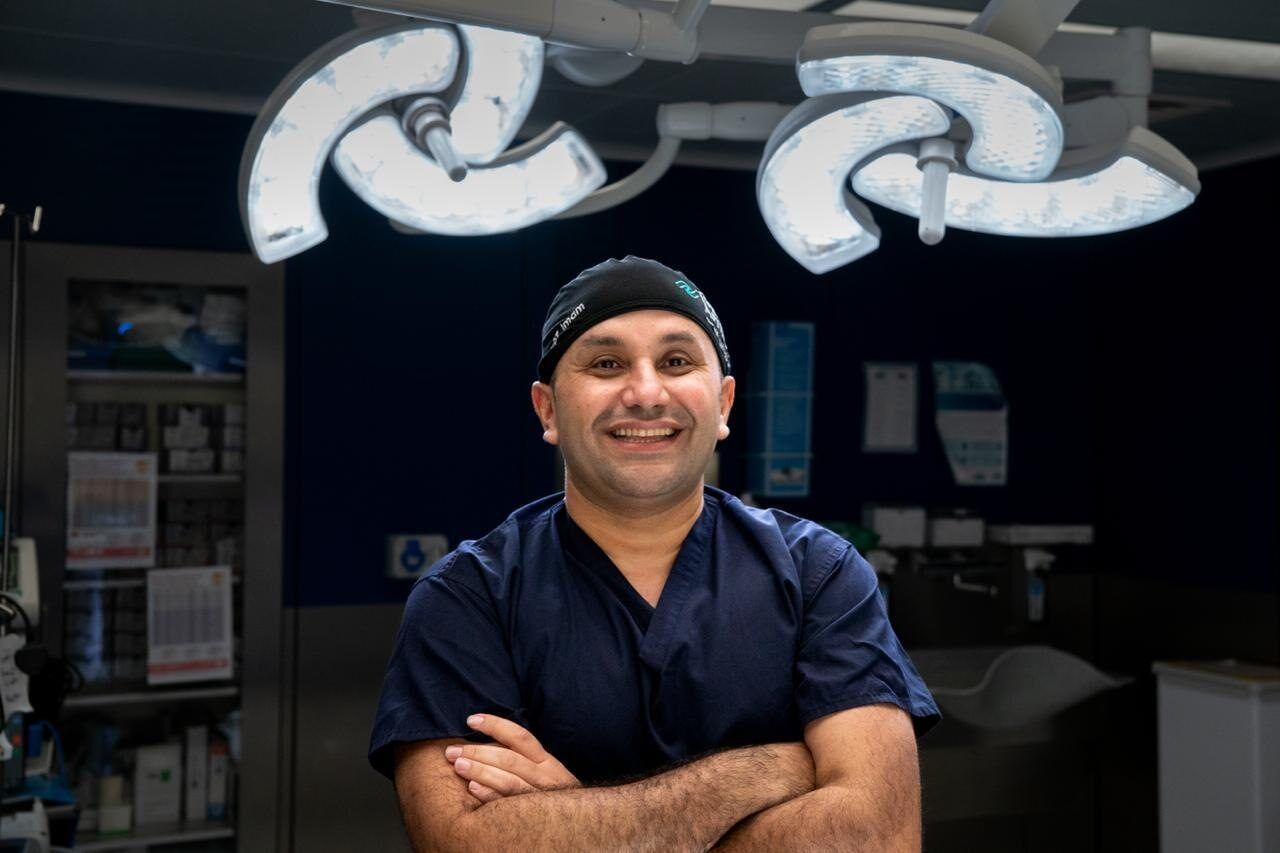
A well-designed chatbot can act as a non-judgemental Socratic coach, deepening metacognition (thinking about one’s own thinking) while preserving privacy and human oversight. One of our trainees, Patrick Cook, designed www.smartaiproject.co.uk under my supervision, a reflective learning at scale. A trainee-led a “reflective agent” that guides users through structured frameworks and produces portfolio-ready summaries. Supervisors can review and annotate, turning reflection into a teachable, auditable habit.
What did we learn?
1. Structure beats sparkle. Reflections anchored to established frameworks (e.g., Gibbs or REFLECT) were
more analytical and actionable than free-text “brain dumps”. The model works best as a scaffold, not a stylist.
2. Privacy drives candour. Trainees were more honest when reflections were stored locally, and supervisors were able to identify themes and competencies, rather than relying on raw transcripts. Candour rose when it was explicit that entries were not used for assessment without consent.
3. Humans close the loop. The bot prompts the thinking; mentors refine the judgment. Supervisor feedback on two or three pivotal decisions per case produced the most significant gains.
What worked in practice (examples)
· Socratic prompts: “What was the key decision point?”, “What evidence supported an alternative?”, “What would you do if time/ data were limited?”, “What will you do differently next time, and how will you know it worked?”
· Time-boxing and checklists: Short, staged prompts (5–7 minutes) outperformed long, open dialogues.
· Bias nudges: Prompts that explicitly probed for anchoring, availability, and premature closure improved diagnostic reflection
Quantitative signals (pilot)
· Reflection quality: LIWC-based reflection score rose from 0.47 → 0.81.
· Authenticity: Increased from 46.6 → 83.7.
· User experience: Trainees reported higher engagement and better time-efficiency.
LIWC = Linguistic Inquiry and Word Count, a text-analysis tool used here as a proxy for depth, emotional insight, and analytical tone.
What didn’t work (and fixes)?
· Overlong chats diluted reflection → Solution: strict time-boxing and fewer, better prompts.
· Style over substance when the bot “prettified” text → Solution: rubric-based scoring against framework elements before any cosmetic editing.
· Edge-case overconfidence → Solution: uncertainty prompts, references to local guidance, and mandatory human sign-off for contentious cases.
Where is this heading?
· Personalised AI mentors. A trainee’s digital logbook pairs with a coach that tracks cases, surfaces missed alternatives and proposes targeted reading via CiteSort.ai to close knowledge gaps.
· Curriculum-aware analytics. Mapping reflections to curriculum competencies (e.g., decision-making, situational awareness), with cohort-level dashboards for programme leads.
· Outcome linkage. Connecting reflection themes to e-logbook data, workplace-based assessments (e.g., mini-CEX, DOPS), and patient outcomes, so reflection translates into measurable improvement.
· Seamless workflow. One-tap capture after clinic or theatre; summaries export straight to e-portfolios with supervisor annotation. Chatbots won’t replace mentorship. Used well, they prepare trainees for it, making supervision more focused, reflection more honest, and learning more deliberate.
What role does international collaboration play in advancing orthopaedic research?
I’ve always been obsessed with democratising healthcare. My travels to less privileged regions have made it clear: brilliance in a single centre isn’t enough. The real challenge is delivering safe, fair, and adequate healthcare at scale, and that demands collaboration. Traditional randomised controlled trials (RCTs) remain the gold standard, but let’s be honest: a properly powered trial can take decades. That’s too slow when patients need answers today. We need RCTs, but we also need pragmatic, adaptive, and platform-based trials that harness collaboration across borders.
It’s mission-critical. Robust science and trustworthy AI demand scale, diversity, speed, and safety:
· Scale brings statistical power. Multicentre cohorts enable us to study rare injuries, uncommon complications, and subgroup effects that no single institution could analyze alone.
· Diversity makes findings fair and generalisable. Different demographics, comorbidities, implants, imaging protocols, and practice settings all reduce bias and strengthen models.
· Speed comes from replication and shared protocols. With parallel teams testing complementary questions, we shorten the time to evidence and cut false positives.
· Safety requires cross-border surveillance. Early signals on implant performance or adverse events often only appear when data from many centres are pooled.
The way forward is federated learning and analytics, data stay local, respecting sovereignty, but models and queries travel securely. Common data models, harmonised outcomes, and platform trials linked to registries allow like-for-like analysis and rapid evidence generation. Shared code, transparent model “cards,” and equity by design, microgrants, fair authorship, local leadership, make collaboration not only possible but fair. That’s exactly what we’re operationalising with OrthoGlobe. It’s a federated network where each site remains data controller, models are versioned and validated externally, and fairness dashboards track performance across age, sex, ethnicity, and deprivation.It is early but we will be there. We’re running rapid-cycle evidence, living syntheses, rolling validations, so promising ideas get tested instead of languishing. And we’re investing in skill transfer, training colleagues in retrieval-augmented generation (RAG), interpretable ML, and imaging pipelines.
The result is faster, higher-quality trials, algorithms that actually generalise, earlier safety signals, and measurable gains in patient outcomes. Democratising healthcare isn’t a slogan, it’s about creating a culture where collaboration is the default, not the exception.
What are the most interesting findings from your research into athletic upper-limb injuries?

I have always enjoyed sports, and now I enjoy treating athletes from different grades and ages. For years, I felt our approach was too narrow. The mindset was simple: a cuff tear must be repaired; an ACL rupture must be reconstructed. However, we now understand that musculoskeletal care must shift from a lesion-centric to a system-centric perspective. The painful tendon or labrum is often just the last link in a chain that has been failing for some time. · Micro-instability can mimic tendinopathy. Subtle capsulo-ligamentous laxity and poor dynamic control frequently present as “tendinopathy.” Addressing scapular mechanics, cuff endurance, and trunk–pelvis coordination can help resolve symptoms without focusing solely on the tendon.
· The kinetic chain sits upstream of the symptom. Deficits in trunk stiffness, hip rotation, stride timing, or contralateral leg drive alter energy transfer and overload the shoulder or elbow. The site of pain is rarely the source of the load.
· Scapular control is a key rate limiter. Dyskinesis reduces subacromial clearance and disrupts the cuff’s length–tension relationship, amplifying shear at the glenohumeral joint, especially under speed. Restoring upward rotation, posterior tilt, and external rotation timing is often the decisive step.
· Neural mechanosensitivity is under-recognised but treatable. Heightened sensitivity of the brachial plexus and peripheral nerves sustains pain and restricts load tolerance. Graded neurodynamic loading, combined with kinetic-chain rehabilitation, can shift recovery trajectories.
· Imaging informs but should not dictate. “Dramatic” scans can coexist with excellent function, while “quiet” scans may mask significant dysfunction. Criteria-led, staged rehabilitation frequently improves both symptoms and imaging, reminding us that we treat patients, not scans.
· Return to play must be function-led, not time-led. Objective readiness matters more than the calendar: symmetry and capacity in strength, power, and rate of force development; fatigue resistance over repeated efforts; sport-specific performance under speed; and confidence under decision pressure. This holistic, system-based approach recognises that true recovery is about restoring resilience and function across the chain, not just repairing the weakest link. What does this reframe look like in practice?
· Prevention: Screen the whole system, not just the shoulder, scapular mechanics, trunk/hip control, workload spikes, and neural irritability. Train deceleration as deliberately as acceleration.
· Rehabilitation: Move stepwise, pain control → scapula/cuff timing → strength and power → full-chain integration → graded sport-specific exposure, with neural loading throughout.
· Surgery: Indicate only when instability and mechanical symptoms persist despite restored chain function and capacity, not just because scans look dramatic. In athletic injuries, the injury is the symptom; the system is the disease. Treat the chain, restore function, and let imaging catch up.
What new insights or themes are you bringing to these four books?
Healthcare must shift from procedures to outcomes, from variation to value, and from analogue pathways to digitally enabled, sustainable care. Across my recent books, the common thread is clear: decision science, reproducibility, and function-centred recovery, reimagined through the digital renaissance we now live in. I am currently in different stages of finishing the editing of four books. In Shoulder Trauma (Springer), the aim is to provide care that is predictive, standardized, and recovery focused. That means decision frameworks that integrate fracture patterns with patient factors, digital-first assessment to reduce diagnostic errors, and protocols tied to outcomes rather than fixation. Older patients require adapted pathways, such as nerve checks, regional anaesthesia, and mobilisation bundles, while learning health systems capture outcomes and feed them back into practice.
Elbow Trauma (Springer) emphasises reproducibility and speed of recovery. Stability triage is the first step, with time-critical steps taken within the first ten days to minimize stiffness and nerve injury. Rehabilitation is treatment, not aftercare, supported by digital tracking and clear escalation rules. A practical taxonomy of complications, alongside digital adjuncts for classification and planning, brings clarity and consistency. For Arm Problems in Primary Care (ORUK), the priority is equipping GPs with confidence, including one-page red/green flag algorithms, pragmatic imaging guidance, stepped care, and clear referral thresholds. The goal is to establish safe and efficient rule-in/rule-out pathways that reduce unnecessary investigations while supporting equity in resource-limited settings. Finally, Sustainable Medical Tourism in the Digital Age (Taylor & Francis) reframes cross-border care as transparent, low-carbon, and continuity-driven. Digital corridors of care enable pre-op assessment, secure data exchange, and remote monitoring, while planetary health metrics and continuity bundles ensure safety, accountability, and reduced emissions. Ethics and equity remain central, with success defined not only by patient outcomes but also by capacity-building in destination countries.
It has been a great deal of work, but all of it felt essential. Together, these projects contribute to a body of knowledge that can help patients, clinicians, and policymakers alike. For clinicians, success means clearer decisions and fewer complications; for patients, less pain and greater independence; for systems, reduced variation, lower carbon, and care that continually learns. Taken together, the four books emphasize the primacy of decision science, the necessity of reproducibility, and the centrality of functional recovery, all framed within the profound shifts brought about by today’s digital era.
How do you balance academic research, clinical practice, and editorial responsibilities?
It is hard. That’s why I run everything as one ecosystem. Clinic and theatre generate questions; research tests them; editorial work disseminates what changes practice; teaching closes the loop. I treat them as one governed workflow, not competing pillars, and I ring-fence time for family.
Operating model
· Red days (theatre): No meetings. Operate, debrief, capture immediate learning points.
· Amber days (clinics): Decisions, consent, and follow-up plans; log unanswered questions into the research queue.
· Green days (writing/editorial): Manuscripts, chapter reviews, protocols, analysis.
Planning horizons (to reduce noise)
· H1 — Service (this week): What improves patient care now.
· H2 — Projects (3–6 months): Trials, audits, guideline updates.
· H3 — Platforms (≥1 year): Registries, digital pathways, collaborative networks (e.g., OrthoGlobe). Each horizon has a short priority list and a named owner. Team science, not heroics. Fellows, therapists, data scientists, and students work to clear roles: clinical lead, methods lead, and editorial lead on every project. Handover templates and premortems preserve momentum through rotations.
Toolchain (privacy-first)
· Evidence: CiteSort.ai to map fields fast and ground decisions in the full literature.
· Drafting & retrieval: On-prem LLMs with RAG for protocols and summaries aligned to local policy.
· Outcomes: Routine PROMs (patient-reported outcome measures) and dashboards so data, not anecdotes, steer change.
Daily: 10-minute huddle on cases and blockers.
· Weekly: Board review across H1–H3; “kill or commit” for stalled items.
· Monthly: Methods clinic (statistics, bias checks), editorial slate review, and a teaching session from recent cases.
Decision filters (what earns a “yes”)
1. Improves outcomes or reduces unwarranted variation.
2. Reproducible and teachable.
3. Fits a scheduled green block and has a named owner. Everything else is declined or deferred.Boundaries that protect care and thinking time. No cross-colour task-switching within a day; email/admin in fixed windows; manuscript work in timed sprints; clinics and theatre never cannibalised for meetings.
Metrics that matter
Time-to-decision, complication rates, PROMs, submission-to-acceptance intervals, trainee outputs, and the proportion of changes adopted into routine care.
Fail-safes
When priorities collide, patient care wins. Editorial responsibilities are delegated to named co-editors. Research timelines flex, clinics and theatre do not.
Family and wellbeing
Ring-fenced time for family. I read, swim, play football, go to the gym, and scuba dive annually; time in nature is non-negotiable and we plan shared family activities.
Bottom line. By running practice, research, and editorial work as one system, with protected time, clear horizons, disciplined cadence, and the right team, I keep attention on what counts: safer decisions, faster recovery, and knowledge that is usable at the point of care.
What are the main barriers to wide adoption of digital health in orthopaedics, and how do we overcome them?
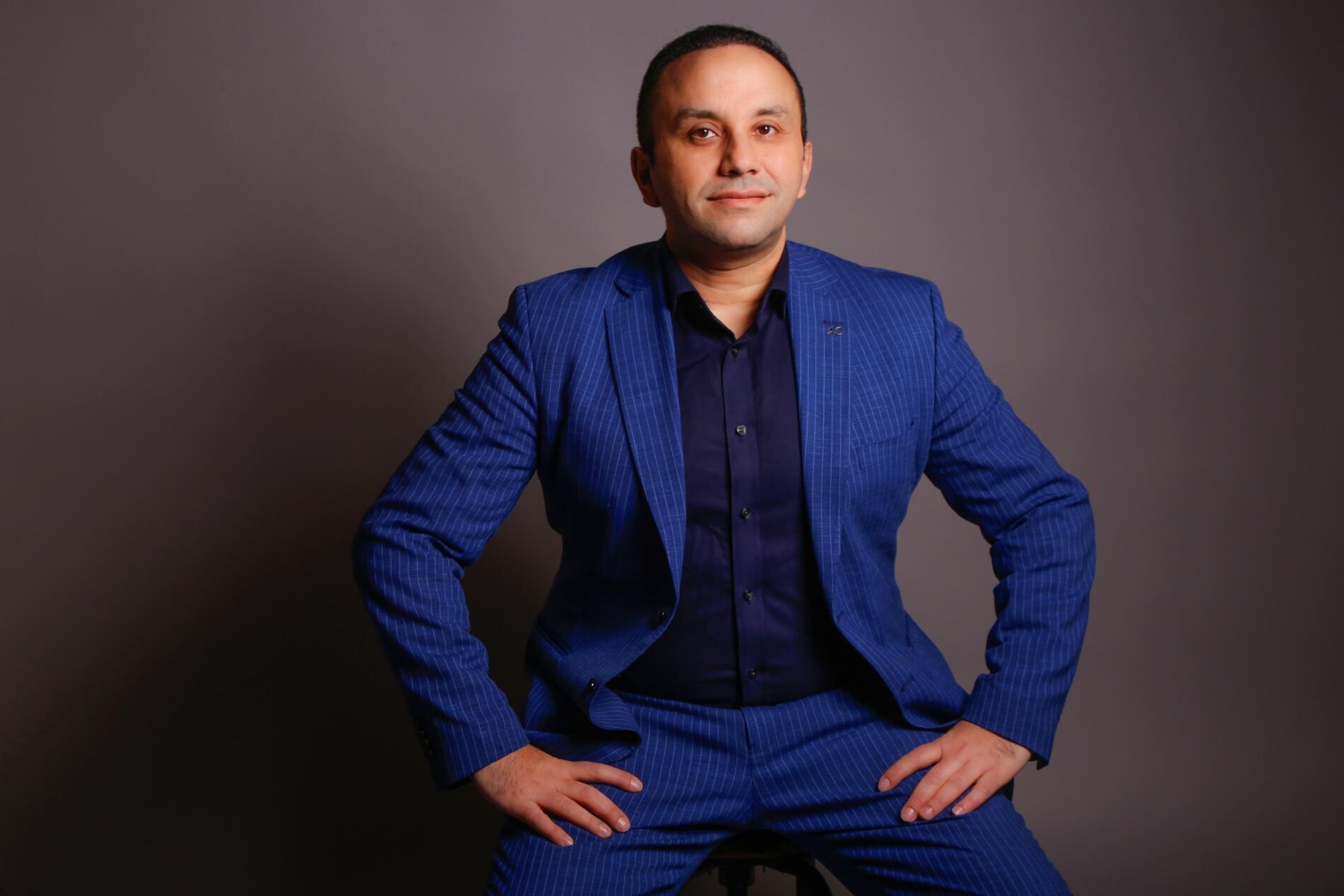
Adoption fails when tools are unsafe, unproven, or add friction. It succeeds when solutions are clinically assured, workflow-native, interoperable, and build capability across teams.
1) Trust, safety & evidence
· Barrier: “Black-box” tools; single-centre claims.
· Fix: Clear intended use; external validation on local data; pre-deployment “silent-mode” trials; ongoing bias/drift monitoring, within UK frameworks (NICE ESF; MHRA SaMD/AIaMD; UKCA where relevant). Add model/dataset cards, human-in-the-loop sign-off, and post-market surveillance aligned to NHS DCB0129/0160.
2) Workflow fit
· Barrier: Extra clicks, duplicated entry, mistimed alerts.
· Fix: Co-design with surgeons/therapists/patients; track time-to-decision and click-count; ship in small, problem-led increments (NHS AI Lab Skunkworks pattern).
3) Interoperability & fragmented data
· Barrier: EHR, imaging, and registry “islands”.
· Fix: “Capture once, reuse widely”: open APIs, FHIR/SNOMED CT/DICOM mappings; make DTAC the procurement gate.
4) Data access & privacy
· Barrier: Siloed data; legal/ethical risk when moving raw data.
· Fix: Use Secure Data Environments (SDEs); apply federated learning/analytics for multi-site work.
5) Culture & capability
· Barrier: Patchy digital literacy.
· Fix: Embed digital/data/design skills in CPD and training (per Topol Review); recognise service-improving digital work in job plans.
6) Equity & sustainability
· Barrier: Underperformance in under-represented groups; hidden carbon cost.
· Fix: Mandate subgroup reporting and bias audits (age/sex/ethnicity/deprivation); include carbon and cost in value cases; support low-bandwidth/remote options.
Trust-level adoption playbook (practical steps)
1. Gatekeeping: Only consider DTAC-passing tools with a safety case and data-protection evidence.
2. Assurance plan: Map to NICE ESF level, MHRA class, and DCB0129/0160 duties; run a silent-mode evaluation with predefined success/failure criteria.
3. Workflow first: Pilot in one clinic or list; enforce “no extra clicks”; measure net time saved and decision quality.
4. Data strategy: Prefer SDE connectivity; design federated training with site-level validation for multi-centre learning.
5. Governance: Publish model cards and live dashboards (performance, drift, equity) with a clear de-escalation plan.
6. Capability: Monthly methods clinics (statistics, bias, safety); pair each clinical lead with a data/UX counterpart.
Any advice for trainees and early-career surgeons on AI, digital health, and collaborative research?
Treat AI as a capable but fallible colleague. Start with problems that matter, deliver small end-to-end fixes, and build literacies, data, design, and governance, so your work is safe, useful, and scalable.
Five moves
1. Start with a real problem
o Who is harmed by the status quo? Which decision is slow or variable?
o Define one primary outcome (e.g., time-to-decision or clicks per case) and a success threshold.
o Plan end-to-end: data capture → analysis → deployment → measurement → write-up.
2. Master three literacies (good enough to collaborate)
o Data: Basic stats, uncertainty, calibration, effect sizes; Python/R to “read–analyse–plot.”
o Design: Usability, human factors, “no extra clicks,” safety-first interfaces.
o Governance: Consent, de-identification, DPIA basics, evaluation design, UK frameworks (NICE ESF; MHRA Sa
3. Ship small, end-to-end projects (measure before/after)
o Clinic triage checklist cutting unnecessary imaging by ≥15%.
o Risk visual for shared decisions that shortens consent by ~3 minutes without loss of comprehension.
o Theatre note generator drafting op notes in <60 seconds (clinician edits, model assists).
4. Collaborate widely (your network is global)
o Roles: clinical lead, methods lead (stats/ML), product/UX, data governance.
o Join open collaboratives (e.g., OrthoGlobe), pre-register, share code and model cards; use federated approaches when data cannot move.
5. Keep a decision diary
o After key cases: expectations → actions → outcomes → lessons.
o Review monthly with a mentor; convert patterns into micro-checklists/prompts.
Mindsets that scale
· Be bilingual: clinical reasoning + the language of data/design.
· Productive dissatisfaction: spot friction, fix one thing completely.
· Collaborate by default: your best co-author may be in another time zone.
· Human first: AI augments judgement; clinicians remain accountable.
Goal: not to be “more digital,” but to deliver better, safer, less variable decisions, transparently, and together.
Professor Mohamed Imam is an exceptionally skilled consultant orthopaedic surgeon who specialises in upper limb surgery, sports injuries, and complex trauma.
Professor Imam uses the latest technology in diagnosing a wide range of upper limb conditions. He has gained leading expertise in the diagnosis and management of wrist, shoulder, hand and elbow conditions, and is highly skilled in the treatment of sports injuries. Among his repertoire of procedures are major shoulder tendon repair, upper body tendon tears, joint preservation, joint replacement, cartilage regeneration, and reconstruction surgery.
Furthermore, Professor Imam specialises in arthroscopic (keyhole) surgery to treat numerous conditions, including arthritis, tennis elbow (lateral epicondylitis), rotator cuff tears, frozen shoulder and tendonitis, as well as wrist and hand conditions such as Dupuytren's contracture and cubital tunnel syndrome.
His extensive specialist training took place in the UK and internationally. In fact, he has been awarded multiple awards and international travelling fellowships, including a fellowship with Professor Christian Gerber, the world-leading pioneer of modern shoulder surgery, at Der Balgrist University Orthopaedic Centre of excellence in Zurich, Switzerland. What's more, he undertook travelling fellowships to gain up-to-date international experiences in Mayo Clinic, The Steadman clinic (the US Olympic team centre of excellence) and Stanford University.
Research is another area of Professor Imam's career. He is the chief investigator of leading national and international studies. His work is widely recognised, and he has published more than 150 peer-reviewed publications in top international medical journals and written more than 40 textbook chapters on upper limb injuries.
Professor Imam has accomplished many achievements throughout his career. He has designed orthopaedic instruments, designed and published different techniques, and authored two books. One of these books surrounding the theme of the use of stem cells in orthopaedics and another concerning shoulder arthroscopy. He regularly presents his research at various national and international meetings. Currently, Professor Imam, with an elite team of researchers, is investigating the use of artificial and machine intelligence in surgery.
We would like to thank Professor Mohamed Imam for his insight.
Thank you for being part of Our Community
We believe in pushing boundaries, sharing knowledge, and highlighting the people and ideas shaping the future of orthopaedics. On the Podium is our platform for showcasing the journeys, challenges, and breakthroughs of those making a positive impact in the orthopaedic community.
If you’ve found value in these stories, we encourage you to stay connected. Follow us on social media for the latest updates, subscribe to our email list for exclusive content, and share these insights with others who might find them just as inspiring.
Your engagement helps us continue to bring important stories to light and grow a community of forward thinkers.
Thank you for reading, supporting, and being part of this journey. We look forward to exploring more with you.
Thank you to our sponsors:
To download this issue of On The Podium, click below.

Sign up to On The Podium. The latest insights and inspiration from orthopaedic specialists around the globe sent straight to your inbox.
On The Podium
The newsletter brought to you by OrthoSpaceX
| Engage with Orthopaedic Leaders | Exclusive orthopaedic insight | |
| Stay Ahead in Orthopaedic Advancements | Uncover Surgical Innovations | |
| Empower Your Orthopaedic Knowledge | Unlock the Minds of Orthopaedic Specialists |



